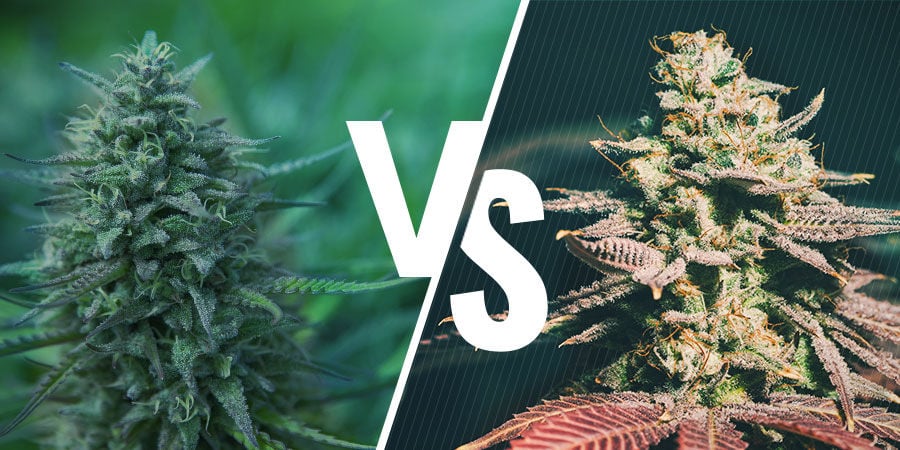
Which to grow: Autoflowering or Photoperiodic?
Share
Choosing the Right Strain to Grow
Before choosing which type of strain to grow, it is essential to understand the difference between photoperiod and autoflowering strains. There are benefits and disadvantages to each, and the optimal choice will vary between each grower's situation, goals, and experience level.
The main difference between photoperiod and autoflowering strains is how they start flowering. Photoperiod strains initiate into the flowering stage by the change in the light cycle. Meanwhile, photoperiod strains will stay in the vegetative stage indefinitely as long as they receive 18 hours of light per day. Only after the light cycle changes to 12 hours of light per day will the plant transition into the flowering period. On the other hand, autoflowers are programmed to start to flower after a certain amount of time, regardless of the light cycle changes.
AUTOFLOWERS
Benefits
Autoflowering strains originate from Cann Ruderalis, which is native to colder climates. Therefore these plants evolved to vegetate and flower in a much shorter time before the cold winter began. They harvest in around 8-12 weeks and are genetically programmed to start flowering after only a few weeks. The quick turnaround time for growers who get value from seed to harvest quickly.
Traits of Ruderalis also include being of shorter stature with smaller bud sites and leaves. These traits allow growers to have more plants in a confined space and be more discrete with their operation. The smaller size also does not require as much maintenance as the more significant photoperiod strains since they do not need to be pruned or given as many nutrients. The low maintenance makes them an excellent option for beginner growers who are not as experienced with advanced growing techniques.
Disadvantages
However, this smaller size also comes with lower yields in comparison to the photoperiod strains. The plants do not have as much time to grow and develop in the vegetative stage before they start to flower and produce trichomes. This can also be a disadvantage if there are any environmental stresses because the plant will automatically begin to flower regardless of its condition. Whereas, it should stay in the vegetative stage until it recovers and is healthy.
Autoflowers also have a lower level of cannabinoid content, which can make them less appealing to growers who value high THC levels. Finally, autoflowers are not cloneable, because the clone would reach its flowering stage simultaneously with its mother plant and have stunted growth.
PHOTOPERIOD
Benefits
Photoperiod strains only shift into the flowering stage once their light cycle changes, giving growers more control. Controlling the plant's stages allows cultivators to grow their plants to massive sizes. Making the plants much more prominent and providing higher yields than autoflowers. An advantage is that growers can also keep plants in the vegetative stage longer. In the case of any signs of stress, this stage allows for recovery before reducing the light and switching them to flowers. There is more variety with photoperiod strains than autoflower options, and they also generally have a higher THC level.
Disadvantages
While yields are higher with photoperiod strains, they take much longer to harvest. Therefore, making them more challenging to grow and maintain. From seed to harvest can take 10 to 16 weeks, which is not a quick turnaround for some growers. Moreover, their large size requires more attention with pruning and shaping, which is more difficult for beginners. Additionally, growers must monitor the plants closely to decide when to force the flowering stage. This step requires more experience to initiate optimally.
